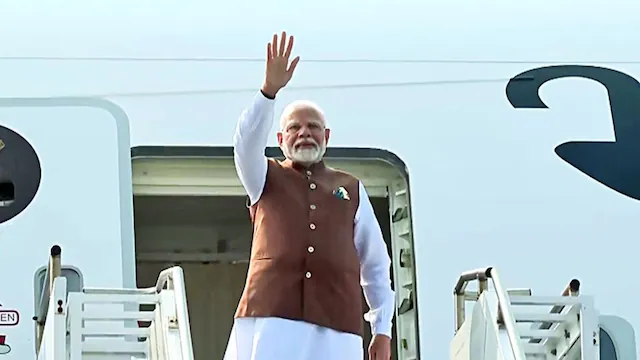Abhinandan Varthaman: A Tale of Bravery and Diplomacy
- MGMMTeam

- Feb 9, 2024
- 3 min read
Introduction
February 2019 marked a turbulent period in the long-standing conflict between India and Pakistan, characterized by the Balakot surgical strike and the capture of Indian Wing Commander Abhinandan Varthaman by Pakistani forces. The intricate web of events and diplomatic maneuvers during this time left an enduring impact on relations between the two countries.

The Balakot Surgical Strike
On February 26, 2019, the Indian Air Force executed a precision strike on a Jaish-e-Mohammed terrorist training camp located in Balakot, Pakistan. This operation was a direct response to the Pulwama terror attack, where forty CRPF personnel lost their lives. The strike aimed to deter further terrorist activities originating from Pakistani soil.
Aerial Confrontation and Abhinandan Varthaman's Capture
Pakistan's retaliatory response led to an aerial dogfight between Indian and Pakistani fighter jets. Wing Commander Abhinandan Varthaman, piloting a MiG-21 Bison, found himself embroiled in intense aerial combat with Pakistani aircraft, including an F-16.
During the skirmish, Abhinandan's aircraft was shot down, compelling him to eject and land in Pakistani territory. He was promptly captured by Pakistani military personnel, raising tensions between India and Pakistan to alarming levels.
The Capture
After his plane was shot down by Pakistani fighter jets, Abhinandan Varthaman ejected from the aircraft and landed on the other side of the Line of Control (LoC). Initially, he was approached by villagers who misled him into believing he was on the Indian side of the LoC. In a moment of excitement, Abhinandan shouted, "Bharat Mata ki Jai" (victory to Mother India). However, he soon realized his error when he was assaulted by the crowd.
Attempting to escape, Abhinandan fired shots into the air from his pistol. Additionally, he reportedly ingested some paper documents to prevent them from falling into enemy hands if he were captured. Subsequently, he was taken into custody by the Pakistan Army. Video footage later emerged showing blood on Abhinandan Varthaman's face.
In a subsequent development, the Pakistan Army released video footage portraying Abhinandan Varthaman having tea and claiming that he was being treated with honor.
Diplomatic Backchannel and Crisis Management
Amidst the escalating crisis, behind-the-scenes diplomatic efforts under the leadership of PM Modi were underway to de-escalate tensions and secure the release of Wing Commander Abhinandan Varthaman. Former Indian High Commissioner to Pakistan, Ajay Bisaria, sheds light on the intricate diplomatic exchanges in his upcoming book, 'Anger Management: The Troubled Diplomatic Relationship Between India and Pakistan'.
According to Bisaria's account, the day following the Balakot strike, Pakistan's foreign secretary relayed intelligence to key diplomatic envoys regarding India's purported missile deployment towards Pakistan. This revelation prompted swift diplomatic engagements aimed at diffusing the escalating crisis.

Diplomatic Engagements and De-escalation
As tensions mounted, Pakistani Prime Minister Imran Khan expressed a willingness to engage in dialogue with his Indian counterpart, Prime Minister Narendra Modi. But, this move came after it was revealed that nine missiles from India were aimed at Pakistan, ready to launch at a moment’s notice in the forthcoming book by former diplomat Ajay Bisaria, who served as Indian High Commissioner to Islamabad during the 2019 Balakot attack.
In a strategic move, India maintained a stance of 'coercive diplomacy,' leveraging its diplomatic channels to convey a clear message of resolve and deterrence to Pakistan and the international community. Despite offers from various quarters, including China, to mediate the crisis, India remained steadfast in its pursuit of bilateral resolution.
Abhinandan Varthaman's Release: A Diplomatic Triumph
Abhinandan Varthaman's capture became a focal point of the escalating crisis, underscoring the fragility of India-Pakistan relations. Through sustained diplomatic efforts, India successfully averted Pakistan's attempts to exploit Abhinandan's captivity as a bargaining tool. Ultimately, Pakistani Prime Minister Imran Khan's announcement of Abhinandan Varthaman's release was hailed as victory of India’s massive diplomatic efforts signaling a crucial turning point in the crisis. India's firm stance and diplomatic resolve played a pivotal role in securing the safe return of its valiant soldier.
Return
Abhinandan Varthaman, returned to India within 58 hours of his capture. He walked through the Attari-Wagah border on the night of February 28th and became the first Indian soldier to be captured by Pakistan since the Kargil conflict in 1999, where Group Captain K Nachiketa spent eight days in Pakistan’s custody after his jet crashed across the LoC. Abhinandan Varthaman was promoted to the rank of Group Captain and just two weeks later, he was honored with the Vir Chakra, India's third-highest wartime gallantry award.
Conclusion
The Balakot crisis of February 2019 stands as a testament to the intricate interplay of military posturing, diplomatic maneuvering, and the human toll of conflict in the India-Pakistan context. Through meticulous analysis and introspection, the events of this period offer valuable insights into the dynamics of regional geopolitics and the imperative of concerted diplomatic efforts in averting catastrophic escalations. The event serves as a stark reminder of the Modi government’s strong diplomatic stance and posturing.




Comments